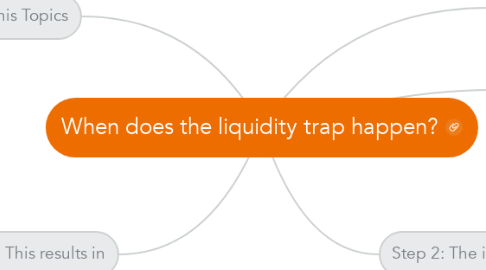When does the liquidity trap happen?
создатель Geopolitics Mapping


1. Step 3: This results in
1.1. An ineffective monetary policy
1.1.1. The economy is not stimulated
1.2. It is worse then before
1.2.1. Interest rates are now close to zero
1.2.2. The state has injected money for nothing
1.2.2.1. The money injected may create bubbles
1.2.2.2. The state has placed itself in debt
2. View More On This Topics
2.1. http://www.investopedia.com/terms/l/liquiditytrap.asp
2.2. http://economictimes.indiatimes.com/definition/liquidity-trap
2.3. https://www.stlouisfed.org/publications/regional-economist/april-2014/the-liquidity-trap-an-alternative-explanation-for-todays-low-inflation
2.4. http://en.wikipedia.org/wiki/Liquidity_trap
2.5. http://en.wikipedia.org/wiki/File:Liquidity_trap_IS-LM.svg
3. Factors favouring the liquidity trap
3.1. a. Low interest rates
3.2. b. High savings rates
3.3. c. A monetary policy trying to stimulate the economy
4. Step 1: The central bank injects cash into private banks
4.1. Why?
4.1.1. To stimulate the economy
5. Step 2: The injection is ineffective
5.1. a. No effect on
5.1.1. Interest rates
5.1.2. Level of income
5.2. b. People keep their cash
5.2.1. Why?
5.2.1.1. They believe that interest rates will soon rise
5.2.1.2. They do not want to hold an asset which has an expected price decline
5.2.1.3. They expect an adverse event
5.2.1.3.1. Deflation
5.2.1.3.2. War
5.2.1.3.3. ...
